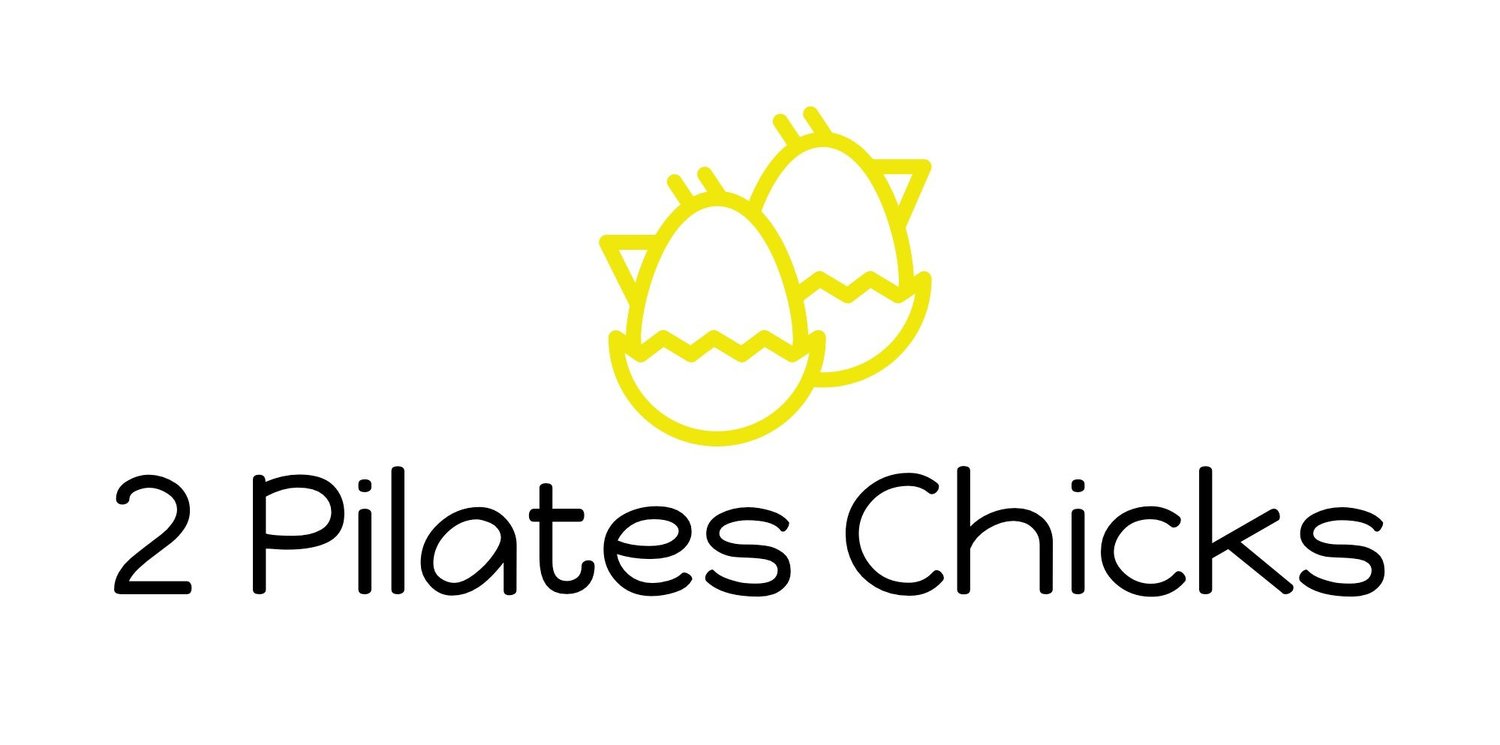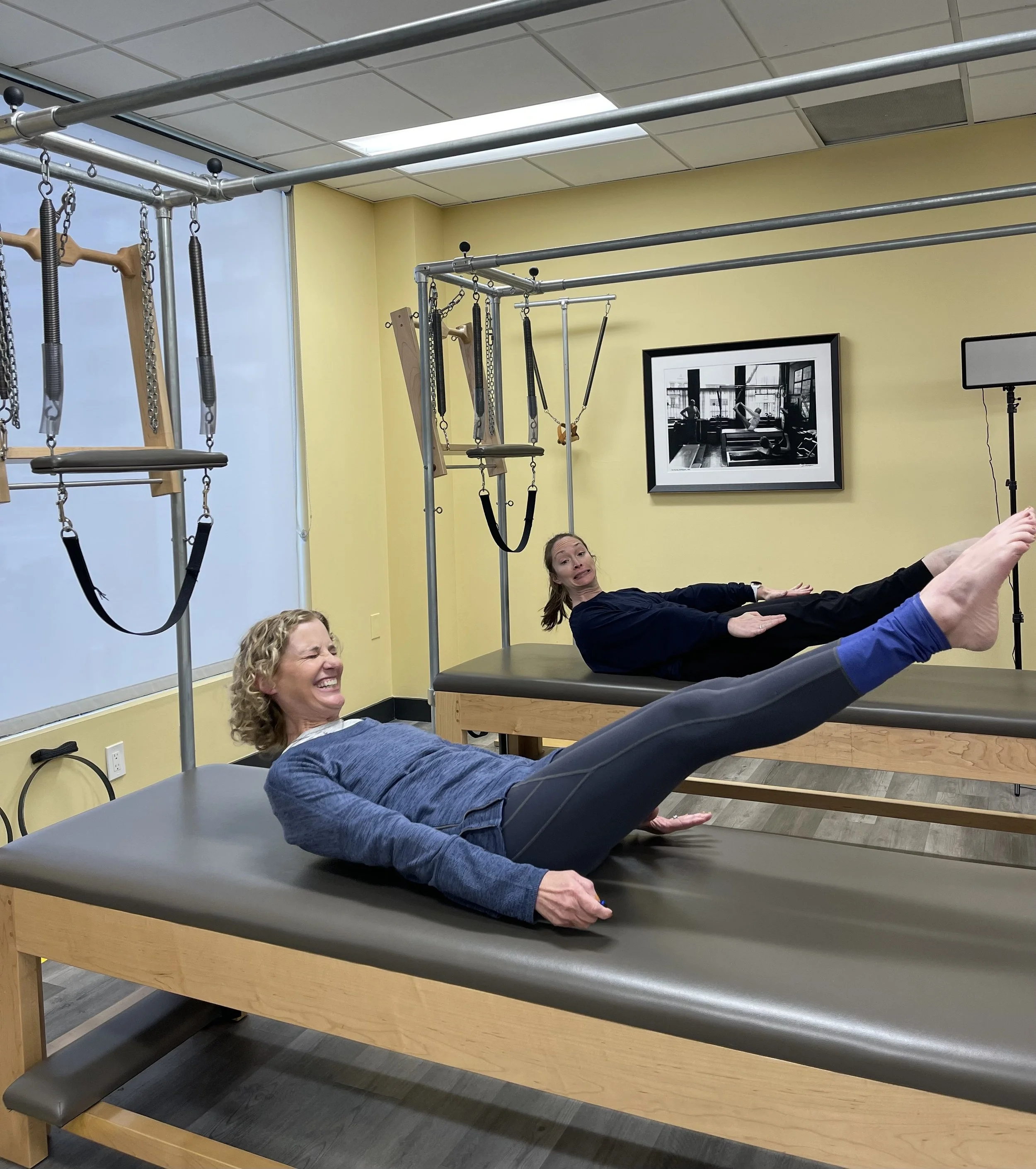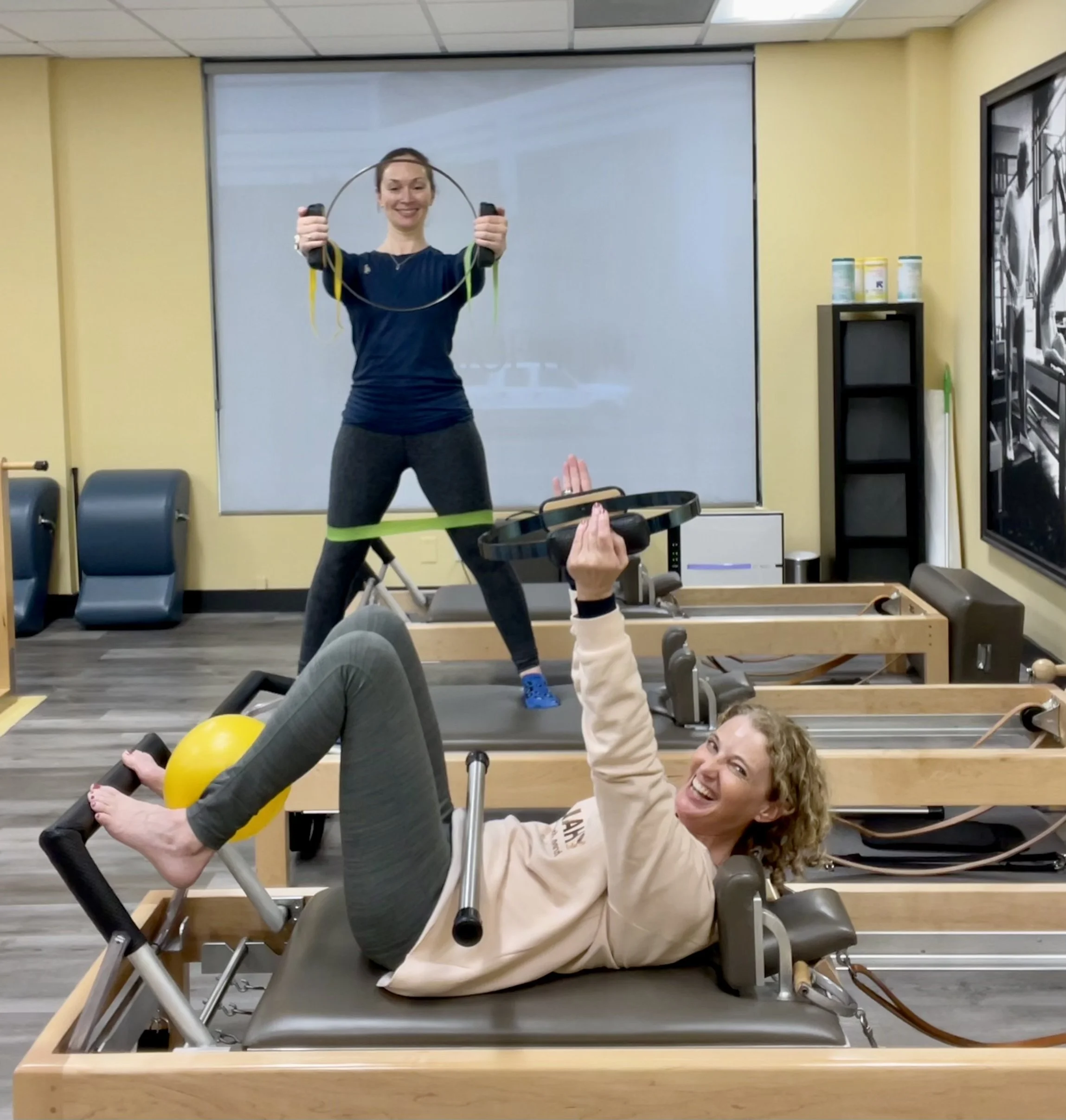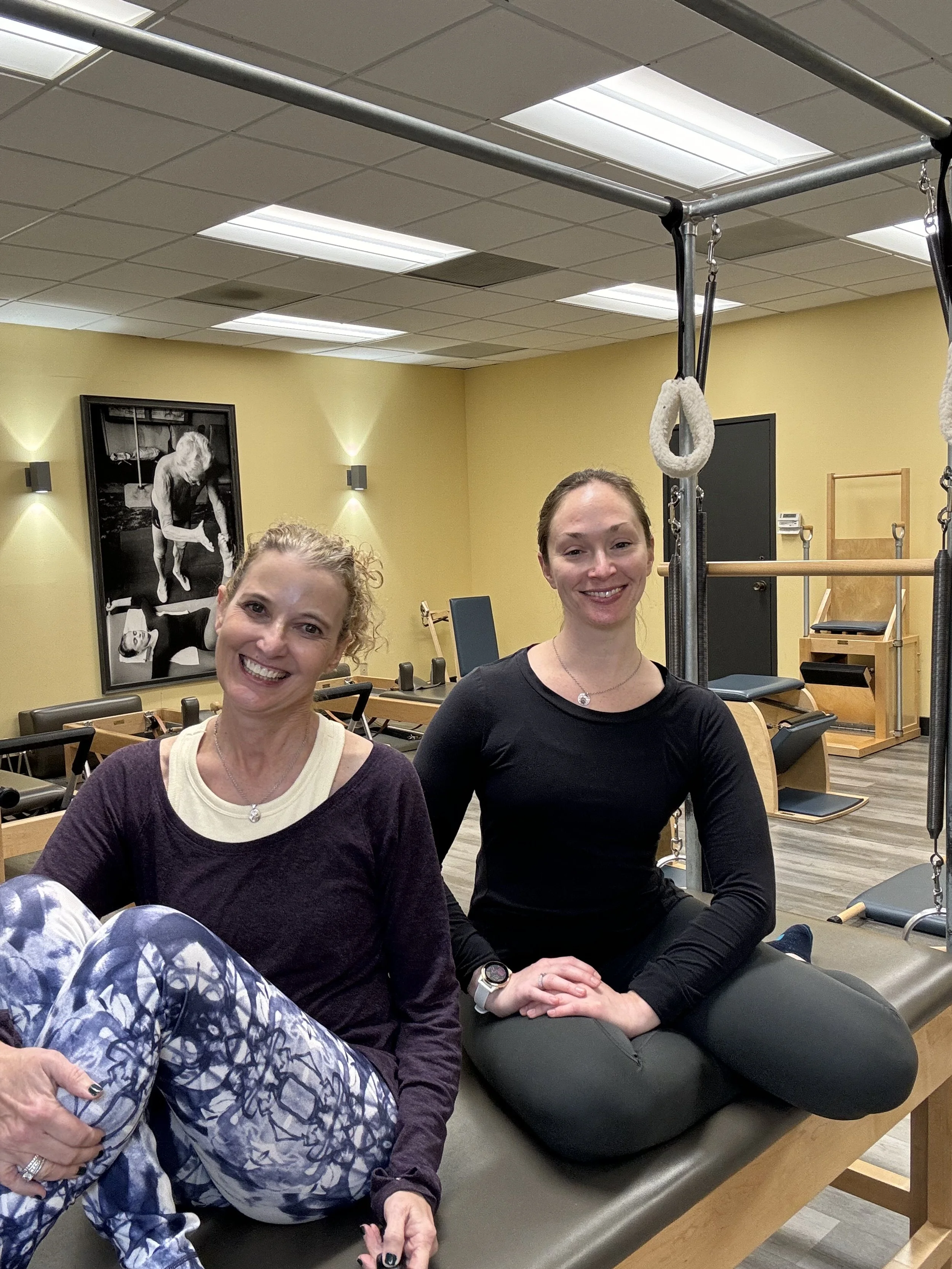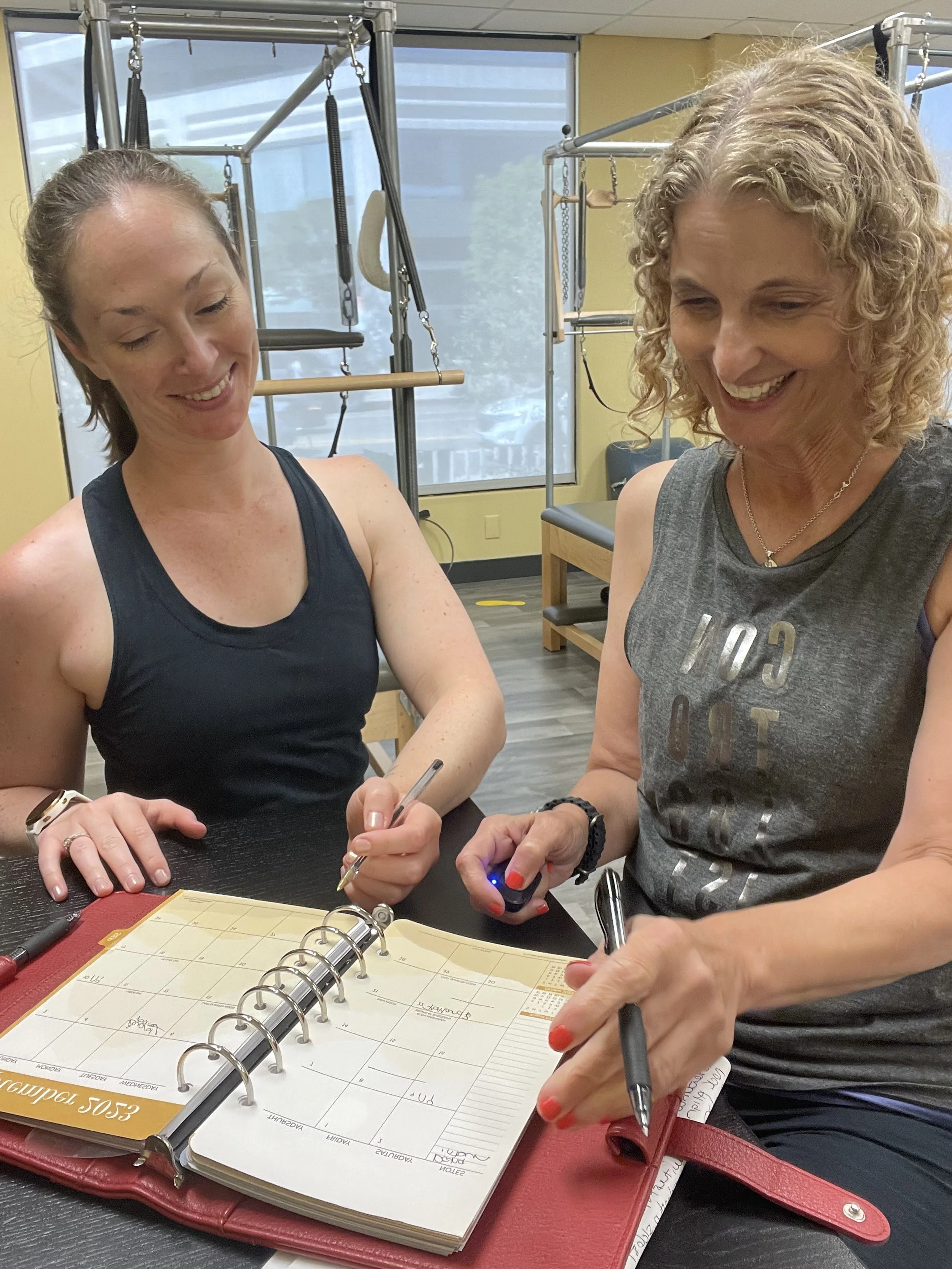Is Flexion in Pilates bad?
Is Flexion in Pilates bad? Why does there seem to be a fear of teaching flexion to Pilates clients? When did this fear of flexion come into the Pilates studio and why? Do you know as a Pilates teacher what flexion really is or how to make it happen?
In our podcast, "The Fear of Flexion", we decided to dive into flexion to understand why there is a fear around it, the purpose of flexion in movements and bodies, and how Pilates teachers can teach flexion with a client who has certain conditions. A lot of times clients will be told due to certain spinal issues that they can’t do any flexion. However, that's not possible in life to actually do.
While there are necessary contraindications and precautions for various pathologies, clients leave the studio and create flexion in their spine all day every day. When someone bends down to tie their shoes, reaches over to pick something up from the floor, weeds the garden, gets out of their car, or sits up in bed, the spine is moving into flexion. Depending on the individual it may or may not be comfortable or pain-free, but normal movements in daily life create varying degrees of spinal flexion and people need to be able to do that movement.
In the studio, teachers can instill fear of flexion in the client if teachers are afraid of teaching flexion. When teaching clients we must ask ourselves how we can help support our clients doing these activities instead of creating a sense of rigidity and fear around certain movements.
In the Pilates studio, we want to take that client that has issues and teach them how to move in flexion with length and space and the range that is available to them in their own body. If the client has issues that make flexion a contraindication for them do we want to teach them to not do any? Essentially we are then taking a movement away from them in the outside world that they are doing without even thinking about it in daily activities.
Instead of creating fear of flexion, we can teach the client what flexion actually means, and how to better support that necessary daily movement. Just because an exercise has spinal flexion does not mean the spine has to be compressed or overloaded. We need to teach how to lift, build space, and lengthen first up and then over into the spinal flexion.
A client can also be taught about reducing or limiting the range of a movement (ROM), being able to control the amount of flexion produced instead of bearing down or dumping into the maximum amount of flexion capable in the spine. Since movement heals and strengthens we shouldn't take movement away from clients, but rather add to them, teaching the body to load better and more efficiently, and building up the tissue tolerance necessary for the movements in the day outside of the studio. Avoiding certain positions can create more issues, tissue tension, and physical stressors. We need the spine to be able to move in all directions, within the range that is appropriate for the individual.
When we test out from a Pilates teacher training program as a Pilates teacher we are told all these things that can happen to our client if we do this or that and they have this issue or that issue. It can create a lot of fear for the Pilates teacher but, if we can understand flexion and what it means in terms of creating length and relieving pressure and compression on the spine it will take that fear out of the Pilates teacher’s brain and give the confidence to understand we need to make sure the client stays safe and healthy in the outside world.
Everyone wants to keep moving and doing activities in their life and they come to Pilates to help create that ability. It is what Joseph Pilates wanted and why he created his work. We don’t want to take a movement away from the client but, teach and guide them so that they load their body better as they move in the world outside the Pilates studio.
The reality is that in the Pilates studio, the chance of the client damaging or making a preexisting condition worse is very low. Most injuries happen in thoughtless moments picking up luggage that is too heavy, or stepping off a curb, and for the Pilates teacher, we are not teaching exercises that will generate enough force to hurt that client. It is important as a Pilates teacher to understand this aspect but, also be smart and think about the body in front of you that you are teaching.
Take for example someone with osteoporosis, do you not let that client ever flex their spine? Does the Pilates teacher keep them straight as a board the entire session to then see the client bend over to tie their shoes at the end of their session?
This is the type of client that we want to teach to not collapse in this moment of flexion but to create space to then move from there. It doesn’t mean we teach that client to go into a deep flexion where most people collapse, but, teaching them to understand how to create space and length to stay safe in the proper range for their body as they get up and down, pick something up, play tennis or golf. This will help them from injuring or exacerbating the issues in the long run.
As we've mentioned, Pilates doesn't generate enough force or extreme load to injure or severely exacerbate a preexisting condition, but we do want to be smart about the choices we give our clients and listen to how they feel throughout their sessions. Teachers should be aware of the guidelines, but be skeptical about following generalizations that are incredibly rigid. Instead, we should ask what is right for this client. However, for newer or less experienced instructors, or even for professional instructors who don't feel comfortable teaching certain pathologies, it is perfectly alright, and highly advisable to follow the generalized safety rules and to refer out as needed. If a teacher doesn't feel comfortable working with a specific condition, it's preferable to work more safely and it is fine to initially not build flexion into the program of someone with those pathologies.
We were wondering when this idea that flexion is bad became perpetuated in the fitness industry. There are pop-fitness articles over the years that have said crunches compress the spine and are bad at strengthening the core musculature. There is research that shows how the action of flexion in a crunch is not as effective as planks in terms of muscle hypertrophy and muscle output and activation of the deepest layer of abdominals, but that doesn’t mean there isn't a place for exercises including crunches and flexion in fitness and rehab routines, and that definitely doesn’t mean it is a dangerous exercise.
Pilates teachers should not want to instill fear in the client when they come in and fill out that intake form saying they have osteoporosis or disc issues. They may already feel like they are broken, and damaged and that something is wrong with them. They may already be afraid, and that is then increased when they are told by their Pilates teacher “Oh, yeah...no you can’t do that”.
Pilates teachers want to instill confidence in the clients so that they aren’t fearful or scared of movement. This puts that client at more risk of being anxious and then possibly getting injured doing something as they have that fear in them and their body becomes rigid and tight as they try and move. The goal of the teacher is to give that client the understanding of how they can move, and what they need to strengthen or get more mobility with to keep their movement safe so that they can continue to enjoy their lives outside the studio and every day.
Pilates teachers and Pilates clients need to not create an atmosphere of fear of flexion and understand what it means and incorporate all the factors of the outside world for the client’s movement. There is no good or bad with flexion, but rather, what this body needs to understand on how to create flexion in the range that is right for them.
For all movements, we should be trying to create length to find the lift, length to find the curl, and length in flexion, creating length in anything we do in Pilates, even in and especially in flexion. We must choose for the specific client what the best options are for them, the appropriate range, working with them and guiding them, but also letting the client guide us as well. Depending on how the client responds to something can guide what we choose for them and how we develop their programming. If we are unsure if an exercise is unsafe for a client for whatever reason, we can find a different exercise or a variation of it that can support the same movement for the same goal that might be better for that individual.
We must know what we are choosing for the body in front of us.
Don't be afraid of flexion as it does need to be incorporated in order to support daily movements and the full function of how the spine moves, but take all the factors into consideration such as range of motion, where the injury is if the client has a condition they're working with, and the nuances of the injury and the individual. It is not clearly delineated; it is very multifaceted.
What to consider when working in flexion with a client with a condition:
1. What other activities do they do in their daily life and for fitness?
2. Why did they come to Pilates? What did they want to get out of it?
3. Don’t take a movement away but, teach length and a smaller range for their specific needs.
4. Your job as the teacher is to support and guide them so that they can move to their body's ability in the outside world and keep safe and mobile.
5. There is no black and white but, gray when it comes to teaching flexion. Every client is different and every issue is different.
6. If you are not comfortable as a teacher giving that movement to that client then stay with what you are confident in.
7. Continue to learn and understand what flexion is, how it is applied in the Pilates method, and why. Each exercise has a specific purpose and building blocks.
8. Find the purpose and build that client to where the range is for their body.
Generalized Safety Guidelines:
Osteoporosis of the spine:
flexion is generally contraindicated as loaded flexion and/or twisting with flexion. However, there are physical therapy exercises such as modified partial roll-downs with the roll-down bar on the Cadillac. If someone says they have osteoporosis or osteopenia, we should know what level of the spine is diagnosed, because if they have osteoporosis in the hips but it's not seen in the spine in their imaging, that's different precautions. For osteoporosis in the hips, the Pilates Tree on the short box is contraindicated. For osteoporosis in the spine, Tower on the cadillac is not advised.
Disc herniations:
Deep flexion at the level of the spine with the herniation is generally contraindication. We should ask which level of the spine and which direction the disc is herniated, though many clients won't know. The most common disc herniations are in the lumbar spine, the next common is in the cervical spine, and usually, the discs are protruding posteriorly.
Other common pathologies:
Stenosis, spondylolysis, spondylolisthesis
These are all slightly different and everyone will be slightly differently affected.
Stenosis: Avoid excessive end-range extension in the area of the stenosis
Spondylolysis, Spondylolisthesis: Avoid repeated bending, extending, or twisting motions, including sitting slumped or hunched over for long periods of time.
Different spinal levels impact the client's movements differently: If a client has Spondylolysis in the lumbar spine they can do cervical and thoracic extension but should work on maintaining their version of neutral in the lumbar level with extensions and limit the ROM, but flexion-based movements will generally be pain-free.
